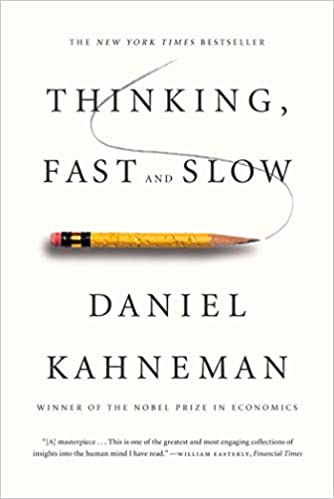|
Thinking Fast and Slow
By Daniel Kahneman Published in 2011 499 Pages Thibault’s Score: 3/5 Thinking Fast and Slow is a behavioral economics book written by economics nobel laureate Daniel Kahneman. The basic premise of the book is that there are two types of thinking: fast, which is subconscious and efficient but more likely to be wrong, and slow, which is calculated and accurate but takes more time. Examples of fast thinking might be when a driver swerves out of the way to avoid a dear, when someone recognizes a song, or when someone reaches out to hug a relative after a prolonged absence. Examples of slow thinking might be writing an article, solving math problems, or planning one’s day. The two types of thinking are not separate, but rather are deeply connected. For example, fast thinking can be primed with subconscious language. People going to a movie theater and watching a film depicting people drinking Coca Cola on a sunny day are more likely to purchase beverages. On the other hand, slow thinking takes effort. Intellectuals are physically drained, and require sugar in order to function after periods of heavy thinking. Less intelligent people avoid slow thinking altogether because it consumes many bodily resources. Understanding the two ways of thinking about the world is critical. Failure to do so may lead one to adopt unconscious biases. The only way to combat these biases is to be more aware of the cognitive processes I already had heard most of the examples in the book from YouTube TED talks and elsewhere, so found the book pretty boring. I understand the value of the research and why Kahneman won the nobel prize in economics, but didn’t learn as much as I have from other books that I’ve read recently.
0 Comments
Leave a Reply. |
Thibault SerletMost of my articles are book reviews, but I also write about many other topics. Archives
December 2023
Categories |

 RSS Feed
RSS Feed